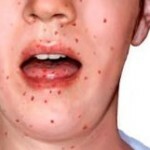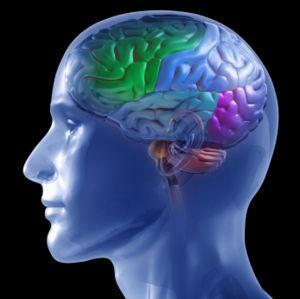 The human body is a serious and interrelated mechanism that responds sharply and quickly to any changes coming in from within as well as from the external environment.
The human body is a serious and interrelated mechanism that responds sharply and quickly to any changes coming in from within as well as from the external environment.
In critical situations, the body can behave in the most unpredictable manner, creating so-called crises.
The autonomic nervous system of a person can promptly deliver reflex signals, which can be either coordinated or not coordinated, completely changing the work of internal organs or disabling them.
Crises can occur depending on various factors, but most often the cause of their occurrence are congenital diseases, stressful situations, unfavorable living conditions.
The triggering of the disease can be a serious environmental change or a dramatic threat to life.
This can give a start to the development of the crisis, which lurked in the human body quite a long time.
Briefly about the crisis
The vagoinsular crisis is one of the varieties of crises when the work of the autonomic nervous system of the human body fails.
Most often, its occurrence is associated with a sudden release of a large dose of insulin into the blood. Such a reaction leads to a decrease in the level of glucose and, accordingly, a lightning-fast deterioration of the state of health.
How the
syndrome manifests The vagoinsular crisis can have a dynamic symptomatology. 
Most often the patient has a fever, there is fever, nausea, profuse sweating, redness of skin areas, bradycardia, weak pulse, stomach pain, intestinal distress.
If the crisis occurs suddenly, then most often it appears as an attack of nausea or a sharp fainting.
If the disorder occurs in waves, then a person may feel a strong fatigue, a periodical vomiting, an abundant fluid stool.
Even after the disappearance of these symptoms, improvement in well-being does not occur for a long time. The cardiovascular, respiratory and nervous system is severely affected, as well as the gastrointestinal tract.
A person feels a strong alarm and panic, there is a feeling of weakness and weakness, breathing is lost, there is shortness of breath.
In children, symptomatology often precedes severe headaches and migraines. It can actively develop in children 10-12 years after severe fright or emotional shocks.
 Hereditary disease, Louis Bar syndrome - symptoms and methods of maintenance therapy are discussed in our material.
Hereditary disease, Louis Bar syndrome - symptoms and methods of maintenance therapy are discussed in our material. How does vascular dystonia manifest itself - the signs and symptoms of the VSD, which everyone should know.
First emergency care
Regardless of how an attack of a vagoinsular crisis occurs, it is first and foremost necessary to call an ambulance or a doctor to prevent a possible further deterioration of the situation.
The patient must be compactly placed, preferably on a flat, soft surface, while the  should unbutton all collars and buttons that can obstruct or knock down the rhythm of breathing.
should unbutton all collars and buttons that can obstruct or knock down the rhythm of breathing.
If possible, to maximize patient access to fresh air, apply cold to the body, try to calm down if a person has a sudden panic or a nervous breakdown from previous symptoms.
It is desirable to give drops or tablets of clonidine, validol, valerian or valocordin.
Possible therapies
The treatment of vagoinsular crises is primarily aimed at partially or completely eliminating all possible factors that are the causative agents and the root causes of this state of the body.
First and foremost, doctors pay attention to the environment, the working rhythm of a person, his addictive habits and way of life.
For the relief of vagoinsular crisis use is usually not required medication.
To do this, you need to start a healthy lifestyle, eat right, conduct the regime of the day, engage in physiotherapy exercises and moderate physical exertion.
To prevent a crisis can also regular sex life and calm timely 8-hour sleep every day.
If the disorder is severe, doctors may prescribe a specific drug treatment course.
In addition to drugs, patients can be prescribed courses of psychotherapy and respiratory gymnastics, which will help bring the state of the body into tone, and the nervous system is in order.
For a quick effect of preventing this type of crisis, it is customary to administer an intramuscular tranquilizer of seduxen, atropine, cordiamine, pantocrine, and ephedrine.
To fix the result, the patient can also be prescribed a course of preparations for internal use: tincture of ginseng, extract of Eleutherococcus, tincture of valerian. 
If a new crisis is suspected, doctors advise injecting a glucose solution intravenously or drinking sweet strong tea.
For severe dizziness and nausea, appoint solutions of haloperidol and dedalon intramuscularly.
An alternative can be pill airs, which should be taken 3-4 times a day.
Complications and risks that accompany the disorder
The main danger of this type of vegetative dystonia is the probability of repeating the crisis at a certain time interval.
Unfortunately, the current treatment does not yet give a 100% result even with timely intervention and constant monitoring of the body.
Most often the person himself leads to subsequent attacks, the emerging syndrome of "anxiety waiting."Since the experienced crises always leave a pretty bright and unpleasant imprint in the memory.
An absolutely healthy organism can start provoking repeated symptoms by itself because of the constant fear of experiencing it again.
 People with the crisis experienced begin to lead a different lifestyle, trying to avoid potential places of danger and anxiety.
People with the crisis experienced begin to lead a different lifestyle, trying to avoid potential places of danger and anxiety.
Often these are unfamiliar places or places of a large number of people. The transferred vagoinsular crisis independently develops agoraphobia and ceases to be socially active participants in society.
Timely treatment helps to remove people from the feelings of apathy and depression , again increasing their social activity.
What to add
To date, the disease is not a sentence or a fatal disease, but completely stopping the development and progression of this dystonia is unreal from a medical point of view.
Timely, correct and adequate approach to your health and proper control, will help to keep your health in normal and not to allow serious consequences and global changes in the health of the body.
To prevent the development of the disorder, it is recommended to lead a calm and measured lifestyle, not provoking a fit of fear and panic with life's domestic circumstances or nervous upheavals.
Vital harmony and complete control over the nervous system will make it possible to forget about vagoinsular crises forever.



